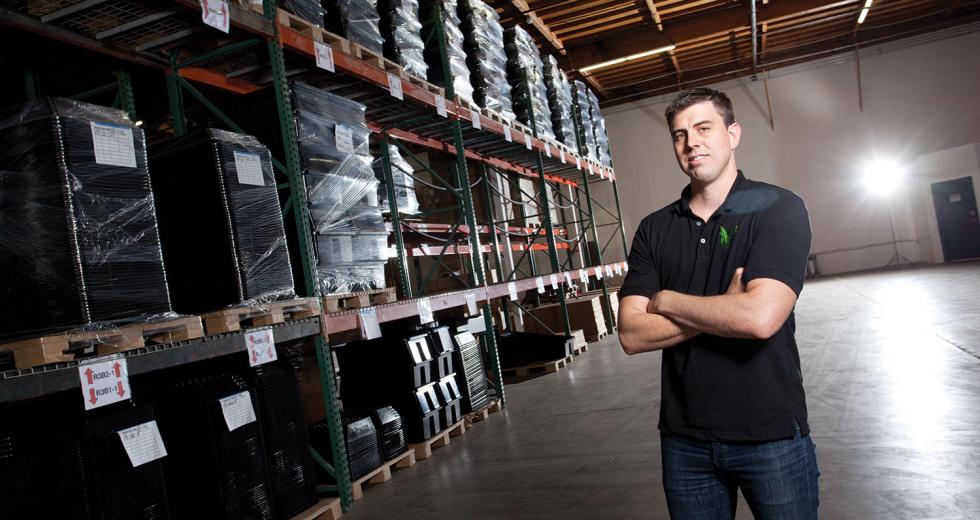Product and company branding is more complex than a logo, a slogan and a catchy marketing campaign. Branding is the way consumers talk about your product or service, how they remember you and how they expect you to behave.
At its core, a brand is a story. Telling that story is an art.
“Boring isn’t an option. And if you try to appeal to everyone, you’re boring,” says Seth Godin, one of the nation’s foremost marketing experts and the author of more than a dozen books on the topic. According to Godin, the most successful branding strategies appeal to a small, specific and fiercely loyal demographic, groups Godin calls tribes.
When those brands tell effective stories, the tribes respond.
Business owners, marketers and product developers can best define their brands by crafting stories that reinforce their tribes’ identity and inspire its members. Here are some tips.
BE ADAPTABLE TO CHANGE
Product quality is the most certain way to ensure customers will
listen to the story your marketing team is telling.
The Louisiana-based company Spot made its name producing a series of satellite-based global positioning systems that allow users to send one-way messages from remote areas to friends, family and emergency responders. After establishing a solid reputation among outdoor enthusiasts, the company contacted Sacramento-based product development firm JDID for help targeting new markets.
“We wanted to leverage the Spot brand but expand the market that we could address,” says Spot developer Bob Bennett.
With that mandate in mind, the designers at JDID began looking for ways Spot could broaden the appeal of the product from hardcore outdoorsmen to people such as soccer moms, boaters or cross-country road trippers. The original device, the Spot II GPS Messenger, allowed users to send pre-programmed messages to a select list of contacts and request help from emergency and non-emergency personnel.
While retaining that original functionality, the JDID team created a device called the Spot Connect that links to smart phones via Bluetooth, allowing users to send short texts to an unlimited number of contacts and access social networking sites like Facebook and Twitter. The added connectivity to friends and family attracted hordes of new users.
“The product added maybe 10 or 15 percent to our market,” Bennett says. “It turns out that many of the people who have Spot IIs also have Connects.” For the most rugged and stripped-down journeys, the Spot II suffices, while the Connect lets users stay plugged in on more leisurely trips.
In creating the new product, durability and reliability were valuable equities Spot was able to expand upon. Since Spot’s customers trusted the original device to send emergency signals from remote wilderness in the event of trouble, they had faith the new product would be equally trustworthy and valuable.
“We tend to think of the qualities of a product as brand attributes,” Delong says. “We believe that the product is the most important member of the brand message since it’s the last agent standing to speak for the company after the purchase is made.” After all, a poor product is something no amount of branding can cover up.
STAY CONNECTED TO YOUR TRIBE
Whether you’re a brand-new company or a firm whose technology is
leading your sector into uncharted territory, it’s vital to keep
your finger on the pulse of your core customer.
Jason Krueger, CEO of the Sacramento-based horticultural company EZ Clone, learned that lesson the hard way. EZ Clone’s marquee product is a line of cloning boxes that facilitate the growth of roots on plant cuttings by circulating fresh oxygen and mist around their bases. This allows gardeners to “clone” their favorite plants by snipping a stalk, placing it in the cloning box and transplanting to the garden once roots have developed.
Product quality is the most certain way to ensure customers will listen to the story your marketing team is telling.
The product has grown increasingly popular among urban and indoor gardeners, and when Kreuger came on as CEO in 2004, EZ Clone was entering a phase of rapid growth.
“Early on, we were sales oriented. Then, as we grew, we became more operationally oriented,” Krueger says. “Did every phone call get answered and answered well? I don’t know. We allowed ourselves to lose focus on our brand and how incredibly important that is to maintain.”
Today, the company places a premium on strong customer connectivity through conventional customer service avenues (such as technical-support calls) as well as social media, and has branded itself as a firm whose employees are as passionate about growing vegetables as its clients are.
“We have [a research and development] and testing guy who will spend an hour on the phone with a customer, Krueger says. “There are a lot of people who are still transitioning (to our system), and we spend a lot of time giving people access to support.”
Every few days, EZ Clone also posts videos on its website and Facebook page, sometimes with technical titles like “How to Re-tap Your Manifold,” but often on subjects as random as hamburgers or bulldogs. Not always relevant to the firm’s core product, the videos nonetheless reinforce EZ Clone’s unique identity and help the company stick in a customer’s head, potentially translating into sales down the line.
“The videos give us the opportunity to be real and to show people how much we care, in a more tangible way,” Krueger says. “We see it as a customer-service venue and a humanizing venue.”
BE AUTHENTIC
Picture the statue of liberty, but rather than hoisting a torch,
she’s holding a handgun aloft. This provocative image, released
in the mid-2000s as the U.S. was fighting two Middle Eastern
wars, was the breakthrough graphic for Akomplice Clothing Co.
Two brothers, Mike and Patrick McCarney, founded Akomplice, an urban street wear company based in Santa Barbara. For the McCarneys, crafting an authentic message was the easiest part of getting the business going.
“We figured that once the world quits liking what we like, our business is done,” says Patrick McCarney, who handles sales for the six-employee company. “We just did what we wanted to do.”
As the liberty graphic suggests, that no apologies approach
alienates some people but motivates others. And, says Godin, the
author and marketing expert, most brands worth talking about are
focused on small and loyal audiences.
“The fragmentation into weird niches means that the only brands
that spread are those that are beloved (or hated) by some, not
tolerated by all,” he wrote in an email.
Today, Akomplice has a presence in 200 stores worldwide and has expanded into higher-end apparel and accessories. In a sense, the firm has branded itself as “the anti-brand,” aimed at people “who understand that it’s fine to enjoy many things in life, and you don’t need to tie yourself to one little safety blanket of a niche,” Patrick McCarney says.
Akomplice, which has sponsored or collaborated with skateboarders, basketball and football stars, rappers, street artists and high fashion boutiques, remains hard to pin down. Likewise are its fans, he says.
And perhaps no one is harder to pin down than the brothers themselves, whose personal stories remain important parts of the company brand. Recent entries on the Akomplice blog chronicle the McCarneys’ travel in South America, giving fans a window into the lifestyles of the joint chiefs of the Akomplice tribe.
“As long as you’re doing something that you actually believe in, I would say document the process, the product and then the aftermath of everything,” says Mike McCarney, the company’s chief designer. “As long as you’re living what you’re trying to sell, it’s easy, because you just document your own life.”
This point underscores the power of promoting the real personalities and stories that underlie any brand. As Godin wrote in a 2011 blog post: “What people really want is the ability to connect to each other, not to companies.”
TOO COOL TO FAIL?
Branding perils to avoid
Jon Clark of Sacramento’s Clark and Christopher Creative Marketing, and Brent Rector, owner of Fuel Creative in midtown Sacramento, talked to Comstock’s about the most common pitfalls small companies face during brand development.
Jumping the gun: Change, when it comes to branding, isn’t always good. Brand recognition and loyalty arise from brand consistency, which is why Rector counsels small-business owners to rein in their perfectionist streak during the branding process. Rather than continuously modifying bits of the brand that seem old or out of date, owners should give the brand time to stick in the public mind. “Just when you are starting to get tired of your brand, it’s starting to permeate the business world,” Rector says.
Going broke: Clark says he often works with startup companies that make branding the last on a long list of early business decisions. “They rent space, buy furniture, hire people and they don’t think about a budget for promotion,” he says. Money isn’t everything, but creating a compelling identity for your company isn’t cheap. “When those kinds of companies come to me, it puts me behind the eight ball to come up with a killer strategy,” Clark says.
Marketing only to yourself: There are countless stories of small businesses founded by people determined to make a living doing what they love, whose business decisions are simply an outgrowth of personal preference. Yet there are also plenty of businesses whose core clientele may not resemble the employees making branding decisions. Rector says it’s important not to settle on a brand simply because it appeals to you. “If you’re only doing things that you love, you may or may not be crafting the best message for your target audience,” he says. If you are seeking professional branding help, it’s critical to know the difference.
Failing to do due diligence: For many entrepreneurs, authentic dedication to their product is the easy part. But it takes a bit more research and elbow grease to ensure the tactics you use to market your product are authentically yours. “Startups must do the necessary legal work to protect themselves,” Clark says. “Do your due diligence on slogans, logos and trademarks.” Clark is engaged in a legal wrangle on behalf of a new client whose slogan of choice turned out to be trademarked by another firm. “Unfortunately, in that case, we need to go back to the drawing board,” he says.
Overlooking employee buy-in: Even the most artful and comprehensive branding campaign will fall flat if a company’s own employees don’t buy into the brand. Since a brand encompasses everything a company does, from answering the phone to advertising to customer service, it’s critical that employees on every level understand and embrace the branding choices. “When we’re designing a brand for a company, we try to get feedback from all employees,” Rector says. Small companies have the advantage here, since all workers can be easily reached. He says: “If people internally aren’t utilizing the brand, then it’s a failure.”
Recommended For You

The Strategy of 3
How to conduct an efficient meeting: Improve comprehension, maximize retention.
Three is a magic number. Yes it is. It’s a magic number.
If you’re humming the lyrics to the iconic “Schoolhouse Rock” song, then you are either over 35, a Blind Melon-head or already in tune with the Strategy of 3.




